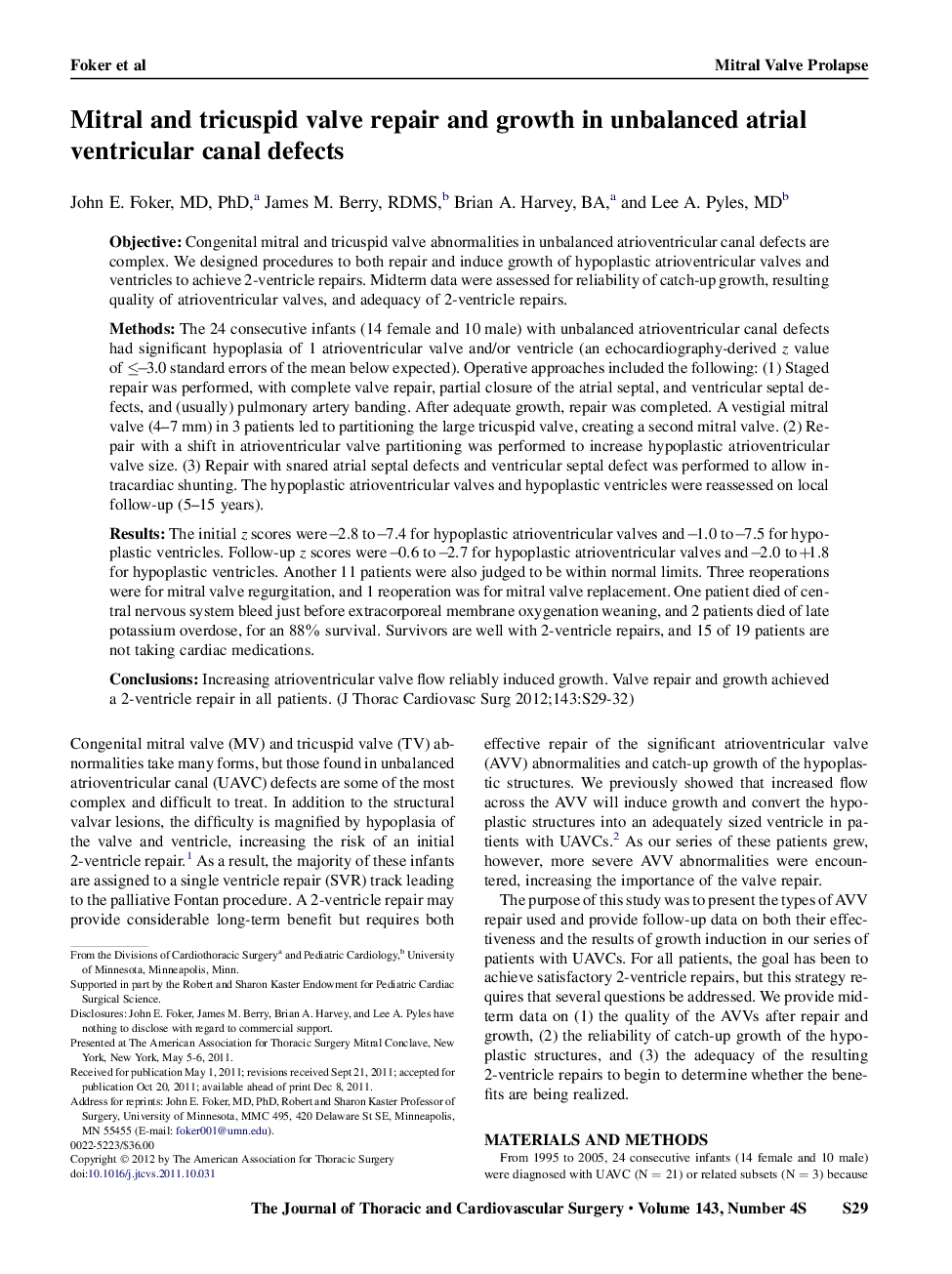| Article ID | Journal | Published Year | Pages | File Type |
|---|---|---|---|---|
| 2981410 | The Journal of Thoracic and Cardiovascular Surgery | 2012 | 4 Pages |
ObjectiveCongenital mitral and tricuspid valve abnormalities in unbalanced atrioventricular canal defects are complex. We designed procedures to both repair and induce growth of hypoplastic atrioventricular valves and ventricles to achieve 2-ventricle repairs. Midterm data were assessed for reliability of catch-up growth, resulting quality of atrioventricular valves, and adequacy of 2-ventricle repairs.MethodsThe 24 consecutive infants (14 female and 10 male) with unbalanced atrioventricular canal defects had significant hypoplasia of 1 atrioventricular valve and/or ventricle (an echocardiography-derived z value of ≤−3.0 standard errors of the mean below expected). Operative approaches included the following: (1) Staged repair was performed, with complete valve repair, partial closure of the atrial septal, and ventricular septal defects, and (usually) pulmonary artery banding. After adequate growth, repair was completed. A vestigial mitral valve (4–7 mm) in 3 patients led to partitioning the large tricuspid valve, creating a second mitral valve. (2) Repair with a shift in atrioventricular valve partitioning was performed to increase hypoplastic atrioventricular valve size. (3) Repair with snared atrial septal defects and ventricular septal defect was performed to allow intracardiac shunting. The hypoplastic atrioventricular valves and hypoplastic ventricles were reassessed on local follow-up (5–15 years).ResultsThe initial z scores were −2.8 to −7.4 for hypoplastic atrioventricular valves and −1.0 to −7.5 for hypoplastic ventricles. Follow-up z scores were −0.6 to −2.7 for hypoplastic atrioventricular valves and −2.0 to +1.8 for hypoplastic ventricles. Another 11 patients were also judged to be within normal limits. Three reoperations were for mitral valve regurgitation, and 1 reoperation was for mitral valve replacement. One patient died of central nervous system bleed just before extracorporeal membrane oxygenation weaning, and 2 patients died of late potassium overdose, for an 88% survival. Survivors are well with 2-ventricle repairs, and 15 of 19 patients are not taking cardiac medications.ConclusionsIncreasing atrioventricular valve flow reliably induced growth. Valve repair and growth achieved a 2-ventricle repair in all patients.
